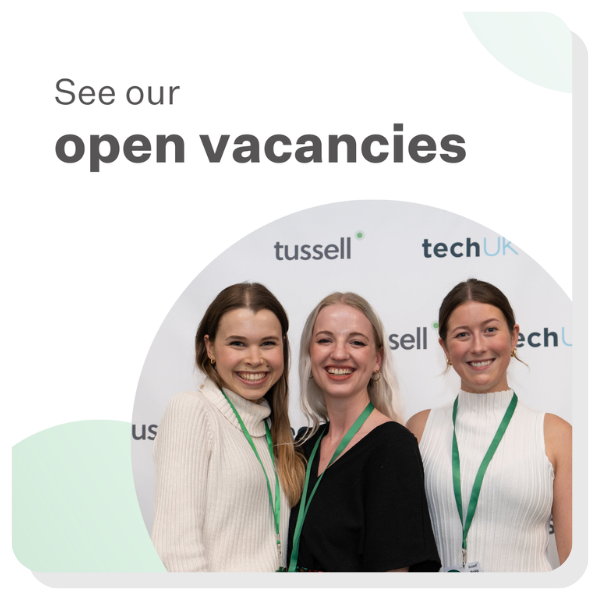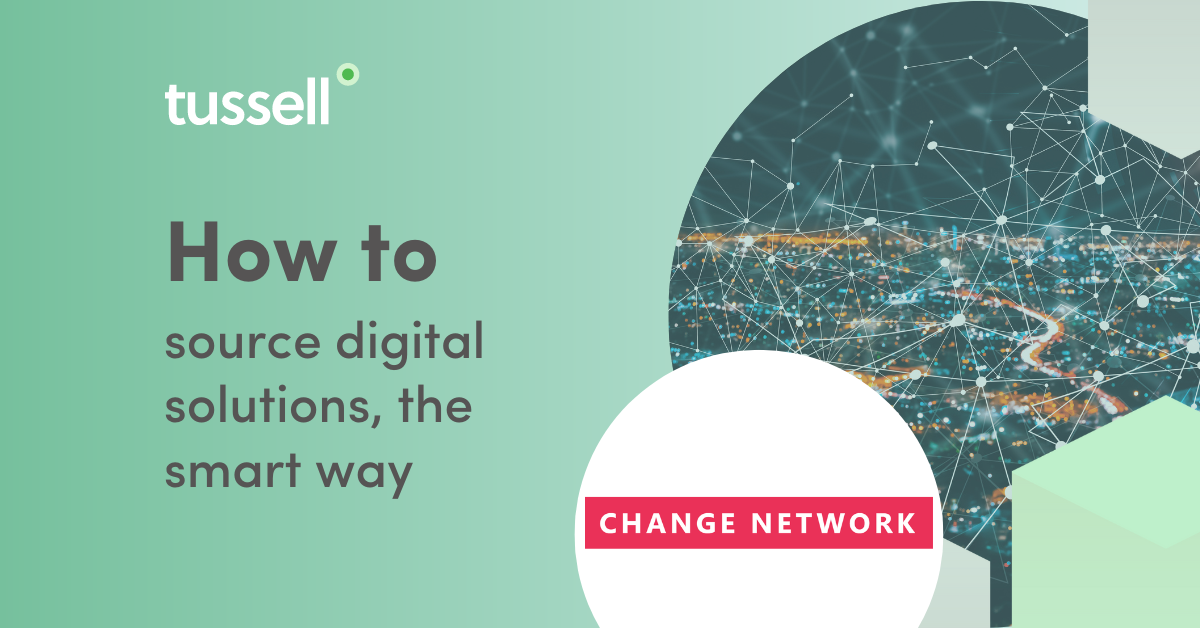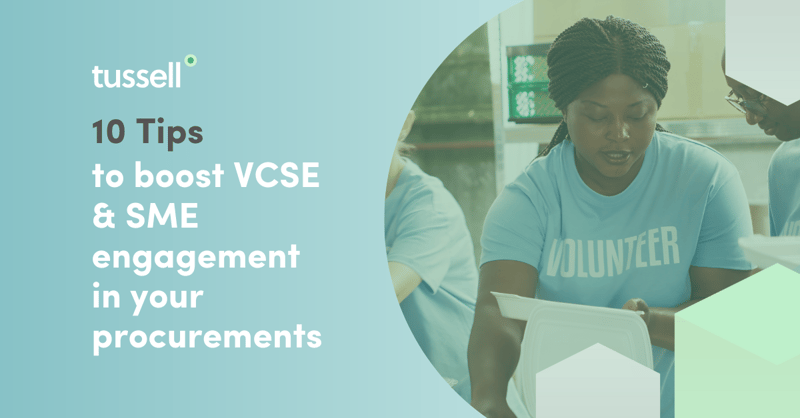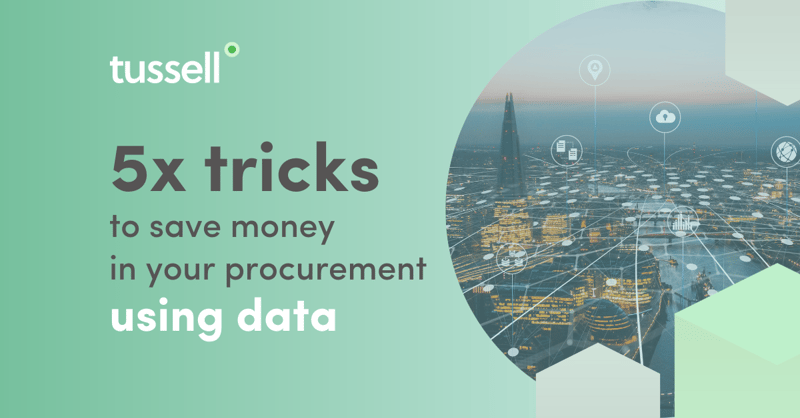Going to market for digital solutions can be daunting. There are countless suppliers, endless offerings, and a myriad of different routes to market you can go down. It’s tempting just to copy what your neighbours have done, or extend existing legacy solutions.
But it needn’t be so difficult.
We sat down with Kate Lindley - Co-Founder & Director of digital transformation enablers Change Network - to gather their advice on how to approach sourcing digital solutions confidently, and find the offerings that’ll actually service your particular needs and nuances.
Change Network’s advice is founded on over 20+ years helping local authorities to source, implement and manage digital solutions.
Skip ahead to read Kate's insights on:
- Q: What common 'shortcuts' do you see procurement teams take when sourcing digital solutions?
- Q: What key considerations & questions must procurement teams consider to find more effective solutions?
- Q: How can procurement teams better understand their authority's specific needs and pain-points?
- Q: What information or data on the market do procurement teams typically lack when sourcing solutions? What's the impact of this on the sourcing process?
- Q: If you could impart just 3 top tips for procurement teams on how to source digital solutions better, what would they be?
*
But first, let's get some context ...
📊 The state of digital procurement in the UK public sector
According to Tussell's market intelligence platform, the UK public sector awarded at least £3.3bn worth of digital-related contracts in 2022, spanning over 5,000 individual contracts.*
Of these contracts, Central Government bodies awarded nearly half of this value - at £1.6bn - while Local Government bodies awarded nearly 20%, or £568mn.
At least 36% of these contracts were awarded via a framework agreement, with Technology Products & Associated Services and G-Cloud 12 by far the two most popular agreements for buyers to procure digital solutions.
What does this all mean?
Billions of pounds worth of taxpayers' money is spent on digital solutions every year.
To ensure that every pound is getting the most mileage, you need to reflect on whether you're sourcing them in a cost-effective and outcome-oriented manner, and whether they're truly addressing your authority's or citizens' real needs.
Kate provided a tremendous level of insight on why contracting authorities can often go awry when sourcing digital solutions, and how you can approach this task differently.
* Defined as any contract with the CPV code 48000000.
🗺️ Q: What common 'shortcuts' do you see procurement teams take when sourcing digital solutions? What impact does this ultimately have on the sourcing process?
"After more than a decade of budget pressures, every council we work with is facing capacity constraints, both within their procurement teams and within individual service areas.
Prioritising what can seem like an avalanche of needs is a challenge - and priority decisions are often needed as to where to place their focus.
It’s always going to be the case that ‘life and death’ procurement for critical service delivery takes precedence over what can sometimes be seen as ‘back office enablers’. What we see quite often is procurement teams being involved too late in the process to support effective procurement of digital capabilities, or councils lacking capacity to plan ahead, leading to them simply extending what they already have in place, or cutting corners when it comes to considering future needs.
Sometimes this leads to sub-optimal solutions being selected that don’t ultimately meet business needs."
💡 Takeaway: Poor forward planning, juggling priorities, and not involving procurement promptly enough means that 'shortcuts' - like extending legacy solutions, or deprioritising longer-term digital projects - are commonplace when sourcing digital solutions.
❓ Q: What key considerations & questions must procurement teams consider to find more effective solutions?
"At Change Network our mantra is that effective procurement starts with clarity on the business need - and not just the immediate need, but the likely need in the short to medium-term future. The pace of technological change is such that nowadays if you don’t think with the future in mind, what you buy can become obsolete, and therefore, costly, quite quickly.
Clearly there will ‘must haves’ in any procurement, which, for digital solutions, should always include non-functional requirements like security, accessibility and interoperability as well as the core functional needs that services need to do their jobs well. Prioritisation is key - it’s essential to be clear on the absolute must-haves so that whatever procurement route is taken you know you’re buying something that can meet the most critical needs.
The opposite error we sometimes see is authorities that ‘spec a solution to death’ - with requirements that run into the hundreds and require suppliers to meet not just the ‘must haves’ but to document everything about their solution in detail.
Not only does this switch suppliers off- and we have seen instances where suppliers choose not to bid for this reason, it also means that sometimes the responses are vague. It’s far better to test a solution directly and visibly understand how it works in an interactive demo where you can really understand how things work (providing you have the right people involved - another key consideration!)
We understand councils don’t always have the capacity to horizon scan and stay connected with the breadth of suppliers out there, which is where organisations like Change Network can add value, bringing real life insight in relation to lived experience of using specific solutions and, in combination with data insights like those provided by Tussell, this wider input can be helpful in differentiating between different solutions and ensuring the right questions are asked."
💡 Takeaway: Specifications for digital solutions need to cover the basics, address your authority's both immediate and potential long-term needs, while at the same time remaining achievable for suppliers. This is not an easy balance to strike. Use hard data & market intelligence to better understand what's already on offer, and to help keep your spec as streamlined and realistic as possible.
💬 How can procurement teams better understand their authority's specific needs and pain-points?
"Very often we find that procurement teams are reliant on council services to be clear on their requirements and rather than being involved in defining those needs themselves; the services do that part and the core procurement team then supports the optimal route to take to ensure a compliant procurement process.
In the main when we work with councils we are working to provide the ‘glue’ between the different areas and ensuring the right stakeholders are involved, which includes procurement, but also the users of the end solution.
For digital solutions, we go back to basics and usually conduct a Discovery exercise through which we understand existing pain points and user needs through a series of service and/or customer workshops and one-to-ones, bringing these needs together with technical requirements (like security, accessibility, scalability, performance and interoperability) and then working with senior stakeholders to prioritise those needs in the context of overall business objectives.
Sometimes we find that the existing solution meets those needs perfectly well, it may just have been configured poorly, or not optimised, creating pain points that could fairly easily be resolved. On other occasions we advise that going out to procure a new solution is the best way forwards. In each case, our consideration and advice starts with the business need."
💡 Takeaway: Ideally, all facets of your authority - from the procurement team to the end user - should be consulted when understanding what a potential digital solution should ideally achieve. Needs should be considered cohesively, rather than dictated from above. Don't be surprised if the end result of this exercise finds that an existing solution is already catering for your needs - it may very well be that it's just not being optimised correctly.
📊 Q: What information or data on the market do procurement teams typically lack when sourcing solutions? What's the impact of this on the sourcing process?
"In our experience, councils tend to look at what their peers are doing and may conduct soft market testing to understand the market in order to determine which procurement route to take.
Typically, available market data can give a view on market share and cost, but this usually doesn’t include insights into functionality, or into the lived experience of having implemented digital solutions, so it’s important that appropriate consideration is given to all angles of software implementation before a decision is made.
At Change Network, we typically advise councils to look not only at the cost of the software itself, but the effort and skillset required to implement it so that total costs and related effort are understood upfront. The available supply chain is also a key consideration (i.e. Will they be reliant on a sole supplier, or is there a supporting network of providers in place), as are things like supplier responsiveness, product development and more."
💡 Takeaway: don't forget to consider more qualitative data on existing solutions' functionality and usability when evaluating which to go for. For quantitative analysis, you can turn to tools like Tussell to access a live picture of the public sector digital marketplace in seconds.
✔️ If you could impart just 3 top tips for procurement teams on how to source digital solutions better, what would they be?
-
"Involve the right stakeholders from the start, ensuring user and business needs are captured upfront - not just looking short term based on the ‘as is’ but to the medium term too.
-
Prioritise, prioritise, prioritise - be clear on your absolute must-haves and test solutions against them. Beyond the must-haves, be open to dialogue with suppliers to maximise the opportunity for innovation.
-
Look outwards - pull in data from multiple sources and consider the procurement from different angles to inform the decisions you make - this might be sources like Tussell, from soft market testing, or from support partners like Change Network. Ensure you know not just the cost and capability of what you’re buying, but how it can be supported in the longer term too."
*
With billions of pounds worth of taxpayers' money at stake, it's never a waste of time to reflect on how you and your procurement team is sourcing digital solutions, and how you might do it just a bit smarter.
Kate's advice is clear: smarter digital sourcing means thinking in the longer term, being decisive on what the solution's must-have priorities should be, and gathering input from multiple sources to inform your sourcing decisions.
Experts like Change Network can support your team to change how you source digital sources, and guide you along the sourcing journey. To learn more about the expert services they offer, head over to their website.
Harnessing tools like Tussell can go a long way in helping your contracting authority to understand what other solutions are already being used across the public sector. This data is key to understanding what's been tried-and-tested, who you should reach out to, and - critically - how much similar solutions have been priced in the past.
To learn how Tussell can help you procure more smartly, book in a personalised tour around our platform.



%20v1.png)
![New Nav Bar - New Tag [Gov]](https://www.tussell.com/hubfs/New%20Nav%20Bar%20-%20New%20Tag%20%5BGov%5D.png)
![[Gov] New Nav CTA - Product, Frameworks Finder (rounded) v1](https://www.tussell.com/hubfs/%5BGov%5D%20New%20Nav%20CTA%20-%20Product%2c%20Frameworks%20Finder%20(rounded)%20v1.png)


.png?width=80&height=80&name=james%20v2%20(1).png)

![New Nav Bar, Insights - Strategic Suppliers 2025 [Gov] v2](https://www.tussell.com/hs-fs/hubfs/New%20Nav%20Bar%2c%20Insights%20-%20Strategic%20Suppliers%202025%20%5BGov%5D%20v2.png?width=600&height=600&name=New%20Nav%20Bar%2c%20Insights%20-%20Strategic%20Suppliers%202025%20%5BGov%5D%20v2.png)






